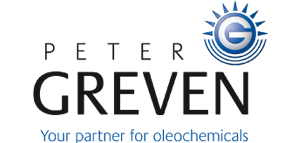
Hydrophobization to reduce capillary water absorption
Capillary water absorption is a crucial parameter for evaluating the moisture properties of building materials. It is based on the physical principle of capillary effects, where water infiltrates the material’s pores due to surface tension and adhesive forces between water and solids. Decisive influencing include the specific pore structure, the pore size and the surface properties of the building material.
The degree of capillary water absorption varies significantly between different types of building materials. Highly porous materials such as cellular concrete or sand-lime bricks naturally have a very high water absorption capacity, while dense materials such as natural stone or high-quality concrete absorb much less water. These properties fundamentally influence the behavior when exposed to water, whether through rising damp from the ground or driving rain on exterior components.
Uncontrolled moisture absorption can lead to severe structural issues at any time. Particularly critical are frost damage from expansion of freezing water, efflorescence from crystallizing salts and the formation of mold in damp areas. These damage mechanisms illustrate that effectively reducing capillary water absorption is vital for the long-term durability and functionality of buildings.
Hydrophobing agents offer an effective solution for controlling capillary water absorption. These additives adhere to pore surfaces and systematically reduce the adhesive forces between water and the material surface. The key advantage of this technology is that it drastically minimizes capillary suction without impairing the physical pore structure. Another significant structural advantage is that the water vapor diffusion capacity of the treated material is largely retained, as only a superficial modification of the pore surfaces occurs without closing them.
The systematic evaluation of capillary water absorption and the effectiveness of hydrophobing agents is carried out according to standardized test methods, such as DIN EN ISO 15148 (disc test) or DIN EN 1015-18 (prism test). In this process, a defined sample of the building material is exposed to water without hydrostatic pressure, allowing for reproducible quantification of water absorption under defined conditions. The amount of water absorbed per surface area and time characterizes the capillary absorption behavior, which can be reduced by up to 95% using high-performance hydrophobing agents. In addition to the 28-day values required by the standard, long-term stability is also essential as the effective duration of the hydrophobic treatment is strongly influenced by various degradation mechanisms like UV radiation, exposure to alkaline substances and mechanical stress.
As a leading manufacturer of hydrophobing agents based on oleochemical metal soaps, alkaline soaps, or combinations of both product groups, we have worked intensively on reducing capillary water absorption. The performance of some of our most effective additives is shown in the following table.



